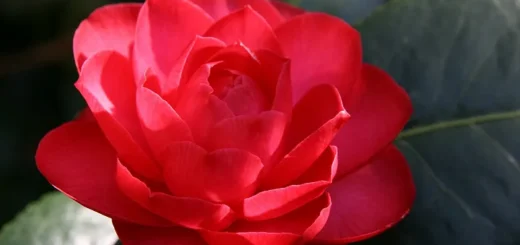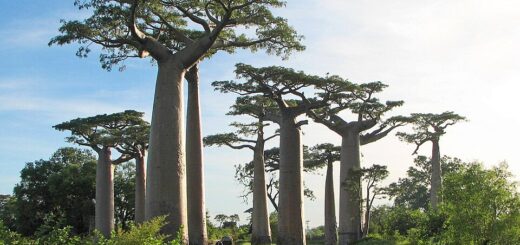Flowering Dogwood Tree – A Four-Season Star in the Garden
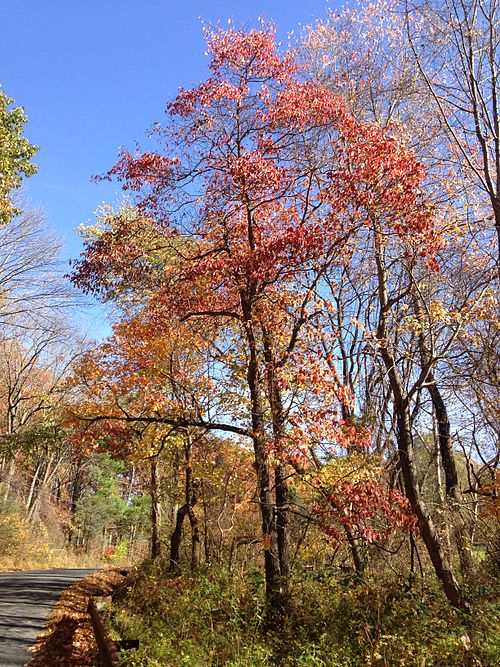
Few trees capture the charm of all four seasons quite like the Flowering Dogwood (Cornus florida). Known for its graceful form, show-stopping blooms, and year-round appeal, this native North American tree is a favorite in landscapes across the U.S.—especially in the eastern and southeastern states. Whether you’re a seasoned gardener or just discovering your green thumb, the flowering dogwood offers something special in every season.
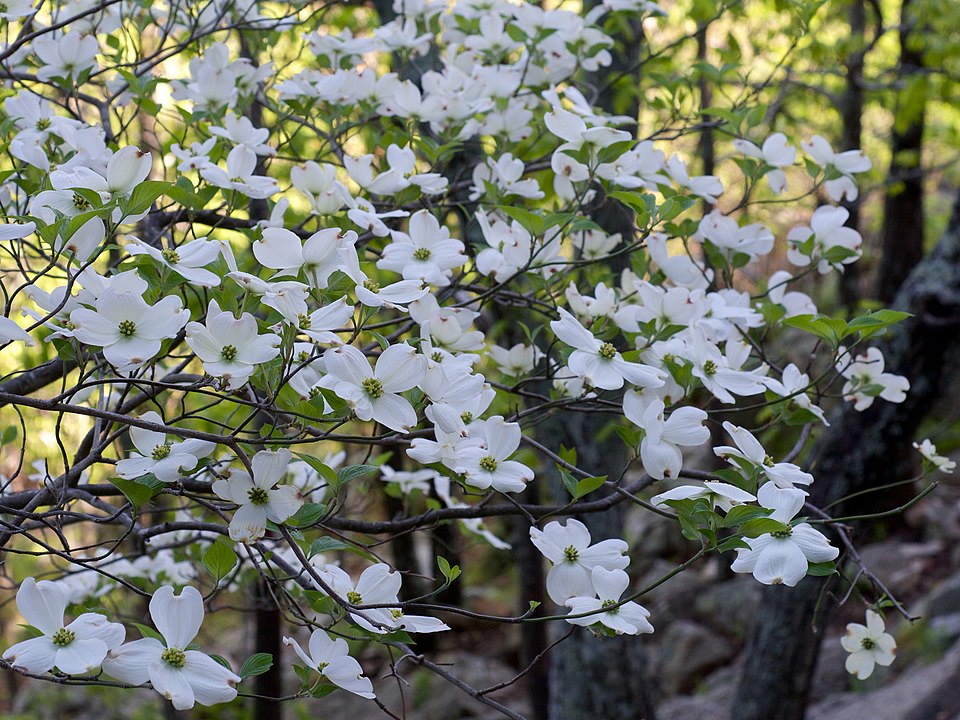
Flowering dogwood in Spring – Creative Commons | Author: Eric Hunt – Source: https://commons.wikimedia.org/wiki/File:Cornus_florida_Arkansas.jpg
Spring: A Bloom Like No Other
The real magic begins in early to mid-spring, when the Flowering Dogwood bursts into bloom. What appear to be large petals are actually bracts—modified leaves that surround the tree’s small, true flowers in the center. These bracts come in shades of white, pink, and even soft red, depending on the variety.
One of the most beloved cultivars, Cornus florida ‘Cherokee Chief,’ stuns with deep rose-colored bracts. Another favorite, ‘Cloud 9,’ offers pure white blossoms and a compact form that fits beautifully in smaller yards.
Beyond their beauty, dogwood blooms are also a vital food source for early pollinators like bees and butterflies.
Summer: Lush and Graceful
After the blooms fade, the dogwood doesn’t miss a beat. Summer brings lush green foliage, a wide canopy, and a gentle branching structure that provides dappled shade—perfect for garden benches, woodland paths, or protecting delicate shade-loving plants below.
The dark green leaves stay fresh through the summer heat, making the dogwood a cooling and visually pleasing anchor in the garden.
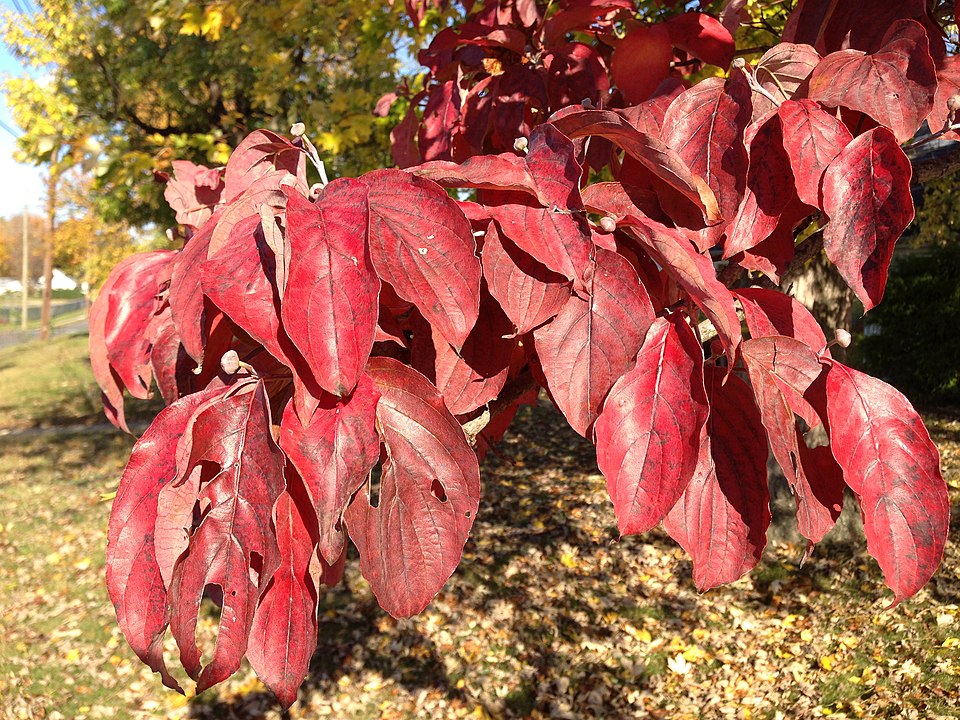
Foliage during autumn – Creative Commons | Author: Famartin – Source: https://commons.wikimedia.org/wiki/File:2014-10-30_10_36_30_Flowering_Dogwood_foliage_during_autumn_on_Glen_Mawr_Drive_in_Ewing,_New_Jersey.JPG
Fall: Fiery Foliage and Scarlet Berries
Autumn transforms the Flowering Dogwood into a kaleidoscope of reds and purples. The leaves turn rich shades of crimson, maroon, and burgundy, creating a warm glow against fall’s golden backdrops.
At the same time, clusters of bright red berries appear, loved by birds like cardinals, robins, and cedar waxwings. These berries are not only beautiful but provide essential nutrition for wildlife preparing for winter.
Winter: Silhouettes and Bark Texture
Even in winter, the dogwood remains a garden favorite. Its branching structure creates an elegant silhouette against gray skies or snowy backdrops. The bark of mature dogwoods develops a blocky, alligator-skin texture, which adds visual interest and character during the dormant months.
Plus, the tree’s buds—shaped like tiny onion domes—add a touch of promise, hinting at the vibrant spring ahead.
Growing and Caring for Flowering Dogwood
The Flowering Dogwood prefers:
- Partial shade, especially in hot climates
- Well-drained, acidic soil
- Consistent moisture, though it’s not fond of soggy spots
It’s best to plant them in early spring or fall, and mulch around the base to keep the roots cool and moist.
Keep an eye out for potential threats like dogwood anthracnose and powdery mildew, especially in humid climates. Choosing disease-resistant cultivars and providing good air circulation can help keep your tree healthy.
A Tree with Cultural and Symbolic Roots
Beyond its beauty, the Flowering Dogwood holds deep cultural significance. It’s the state tree of Virginia and the state flower of North Carolina and Missouri. In Christian symbolism, the dogwood is often associated with rebirth and resurrection, thanks to its cross-shaped bloom and reddish tips.
Whether you’re drawn to it for its springtime bloom, its fall color, or the way it feeds the birds in winter, the Flowering Dogwood is more than just a tree—it’s an experience, season after season. If you’re looking to add a touch of native elegance and year-round interest to your landscape, the Flowering Dogwood might just be the perfect pick.
References:
https://en.wikipedia.org/wiki/Cornus_florida

